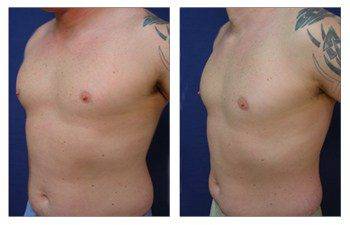

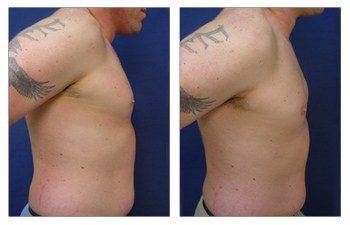

Download SurgiSculpt’s free Liposuction eBook
Gynecomastia causes are several and typically involve a combination of weight gain and history of hormone imbalance. The main hormonal imbalance involves the imbalance between testosterone and estrogen. The exact cause is a combination of low testosterone and high estrogen.
The imbalance of these two hormones routinely occurs during puberty as evidenced by a large number of gynecomastias in teenagers. The next peak in gynecomastia occurs after the age of 50 when men tend to undergo decreased testosterone production that is associated with decreased libido.
The next most common cause of testosterone and estrogen imbalance is related to the consumption of marijuana. Marijuana encourages your body to increase estrogen production which directly stimulates the breast glands to grow. Another supplement that was popular until a few years ago amongst bodybuilders was exogenous androgen taken to stimulate muscle growth.
A final common culprit has been extreme alcohol intake. Miscellaneous medications that increase, reduce, or block the action of testosterone include prostate enlargement, prostate cancer, certain antibiotics, stomach ulcer medications, and/or depression medications. Finally, rare endocrinological causes can be a cause of gynecomastia.
Gynecomastia patients must undergo a comprehensive evaluation of gynecomastia causes prior to undergoing gynecomastia surgery. This includes an evaluation by their primary care physicians to complete a breast examination. They also need a thorough interview to appreciate any history of taking drugs, supplements, and/or drugs that need to be stopped prior to undergoing surgery.
Next, laboratory workup is necessary to not only evaluate hormone levels but also to rule out other causes of elevated estrogen such as certain cancers. If patients present with breast pain, they may consider an MRI to rule out breast atypia or cancer.
Please see this 33-year-old male underwent bilateral gynecomastia repair to improve breast appearance when wearing road bike attire.
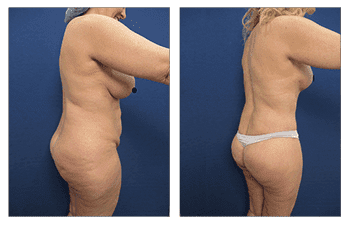
47-year-old female patient who decided it was worth getting a BBL revision.
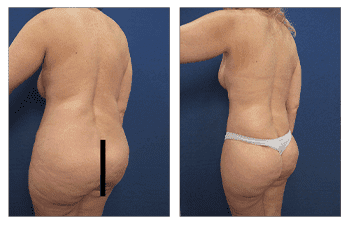
47-year-old female patient who decided it was worth getting a BBL revision.
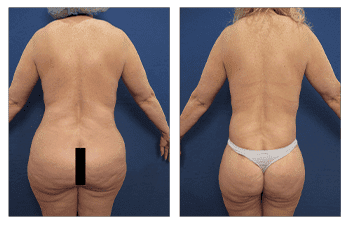
47-year-old female patient who decided it was worth getting a BBL revision.
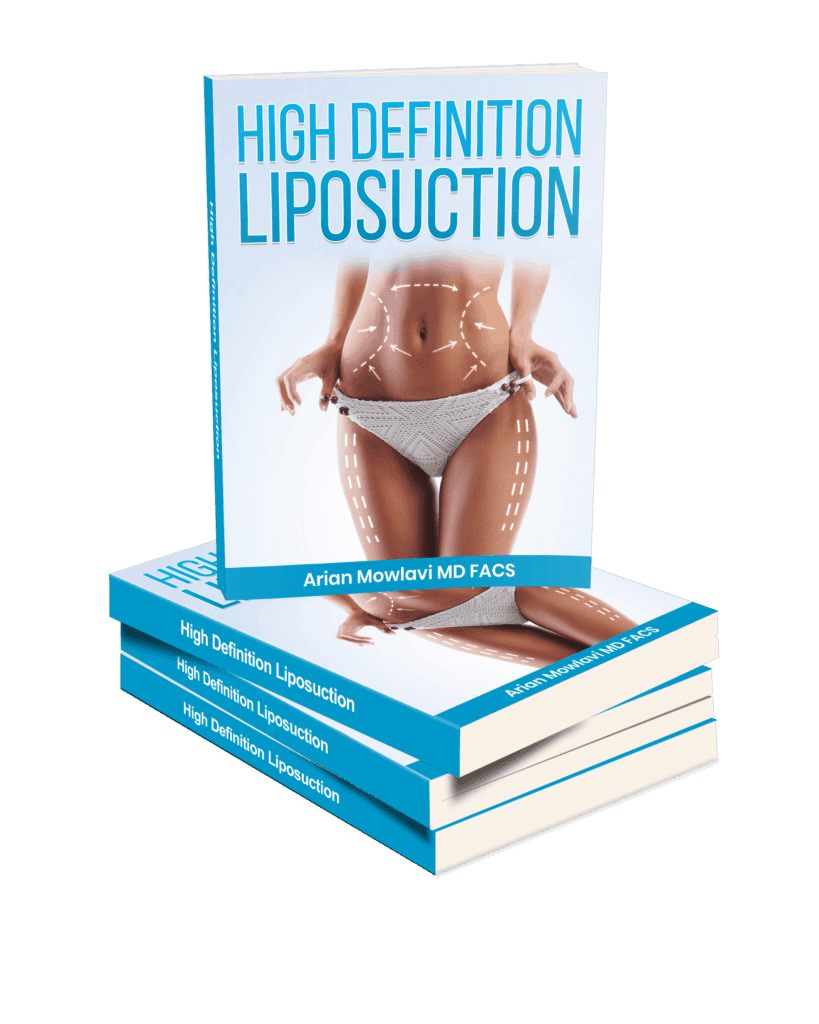
Download SurgiSculpt’s free Liposuction eBook
Please see this 47-year-old female patient who decided it was worth getting a BBL revision.
Delving Deeper into Gynecomastia: Unraveling the Causes
Gynecomastia, a condition that results in enlarged breast tissue in men, often raises eyebrows due to its visible nature. However, beyond the cosmetic concerns, gynecomastia has multifaceted roots that can range from physiological changes to underlying medical conditions. In this exploration, we aim to shed light on the myriad of factors contributing to this condition.
The Crucial Role of Hormones in Gynecomastia
Our bodies are regulated by a delicate balance of hormones, and any disruption in this equilibrium can manifest in various ways. When it comes to gynecomastia, the balance between estrogen (female hormones) and testosterone (male hormones) plays a pivotal role.
The Estrogen and Testosterone Tug of War
While both men and women produce estrogen and testosterone, their proportions vary. Men typically have higher levels of testosterone, which prevents the formation of breast tissue. However, when testosterone levels dip or estrogen levels rise, the balance tilts, potentially leading to gynecomastia.
Natural Hormonal Fluctuations
Life stages marked by significant hormonal shifts, such as puberty or aging, can predispose men to gynecomastia. For instance, testosterone levels tend to wane as men age, making older men more susceptible.
Medications and Drugs: A Common Culprit
It might surprise many, but several commonly prescribed medications, as well as recreational drugs, have been linked to gynecomastia.
Heart Medications and Antibiotics
Certain medications used to treat heart ailments, like anti-hypertensives, can be a cause. Additionally, specific antibiotics have been associated with gynecomastia. The FDA’s medication guide can be an invaluable resource for potential side effects of prescribed drugs.
Mental Health Drugs
Anti-anxiety medications, antidepressants, and antipsychotic drugs can also disrupt hormonal balance, leading to enlarged breast tissue in some men.
Substance Abuse
Recreational drugs, including marijuana, heroin, and anabolic steroids, can tilt the hormonal balance, leading to gynecomastia. Moreover, excessive alcohol consumption has also been identified as a contributing factor.
Underlying Health Conditions: Hidden Triggers
Often, gynecomastia can be a symptom of more profound health issues.
Liver and Kidney Diseases
Both the liver and kidneys play a role in hormone metabolism. Diseases affecting these organs can disrupt the hormonal balance, making gynecomastia a potential symptom. WebMD’s section on liver diseases provides an in-depth analysis of these conditions and their implications.
Thyroid Malfunctions
The thyroid gland, responsible for producing thyroid hormones, can sometimes go awry. Hyperthyroidism, a condition where the thyroid is overactive, can increase the production of binding proteins that affect testosterone levels, thereby leading to gynecomastia.
Tumors and Cancers
Certain tumors, especially those involving the testes, adrenal glands, or pituitary gland, can produce hormones that disrupt the male-female hormone balance.
Nutritional and Herbal Products
Interestingly, some herbal products and supplements, including tea tree oil or lavender-infused products, have estrogenic properties, which can, in rare cases, contribute to gynecomastia. It’s essential to be aware and potentially consult a healthcare professional when adding supplements to one’s regimen.
Wrapping It Up: An Informed Perspective on Gynecomastia
While gynecomastia primarily presents itself as a cosmetic concern, the causes are diverse and can run deep. From hormonal imbalances to medications, and from underlying health conditions to nutritional products, understanding these triggers is the first step towards effective management. If gynecomastia is a concern, always consult with a healthcare professional to unravel its root cause and chart out a treatment pathway.
Finally, gynecomastia patients must undergo an examination by a SurgiSculpt surgeon to document their gynecomastia causes and characterize their gynecomastia signs and breast changes. This will help customize their unique gynecomastia surgery in order to optimize their gynecomastia surgery Please see this 33-year-old male underwent bilateral gynecomastia repair to improve breast appearance when wearing road bike attire.
